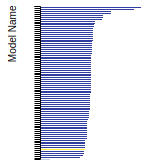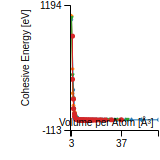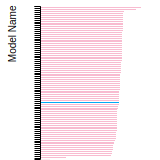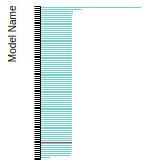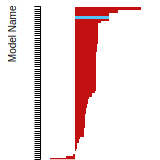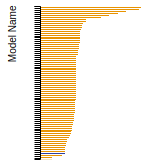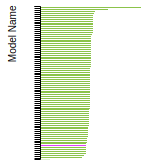 EAM_Dynamo_MendelevKramerHao_2012_Ni__MO_832600236922_005
EAM_Dynamo_MendelevKramerHao_2012_Ni__MO_832600236922_005
| Title
A single sentence description.
|
Finnis-Sinclair potential (LAMMPS cubic hermite tabulation) for Ni solidification developed by Mendelev et al. (2012) v05 |
|---|---|
| Description
A short description of the Model describing its key features including for example: type of model (pair potential, 3-body potential, EAM, etc.), modeled species (Ac, Ag, ..., Zr), intended purpose, origin, and so on.
|
An EAM potential designed to simulate the solidification in Ni. This is part of a Ni-Zr potential described in the source citation. |
| Species
The supported atomic species.
| Ni |
| Disclaimer
A statement of applicability provided by the contributor, informing users of the intended use of this KIM Item.
|
This potential was developed to simulate the solidification of Ni. |
| Content Origin | NIST IPRP (http://www.ctcms.nist.gov/potentials/Ni.html) |
| Contributor |
Mikhail I. Mendelev |
| Maintainer |
Mikhail I. Mendelev |
| Developer |
Matthew J. Kramer Cai-Zhuang Wang Mikhail I. Mendelev S G Hao Kai-Ming Ho |
| Published on KIM | 2018 |
| How to Cite |
This Model originally published in [1] is archived in OpenKIM [2-5]. [1] Mendelev MI, Kramer MJ, Hao SG, Ho KM, Wang CZ. Development of Interatomic Potentials Appropriate for Simulation of Liquid and Glass Properties of NiZr_2 alloy. Philosophical Magazine. 2012;92(35):4454–69. doi:10.1080/14786435.2012.712220 — (Primary Source) A primary source is a reference directly related to the item documenting its development, as opposed to other sources that are provided as background information. [2] Kramer MJ, Wang C-Z, Mendelev MI, Hao SG, Ho K-M. Finnis-Sinclair potential (LAMMPS cubic hermite tabulation) for Ni solidification developed by Mendelev et al. (2012) v05. OpenKIM; 2018. doi:10.25950/ebd6cbc4 [3] Foiles SM, Baskes MI, Daw MS, Plimpton SJ. EAM Model Driver for tabulated potentials with cubic Hermite spline interpolation as used in LAMMPS v005. OpenKIM; 2018. doi:10.25950/68defa36 [4] Tadmor EB, Elliott RS, Sethna JP, Miller RE, Becker CA. The potential of atomistic simulations and the Knowledgebase of Interatomic Models. JOM. 2011;63(7):17. doi:10.1007/s11837-011-0102-6 [5] Elliott RS, Tadmor EB. Knowledgebase of Interatomic Models (KIM) Application Programming Interface (API). OpenKIM; 2011. doi:10.25950/ff8f563a Click here to download the above citation in BibTeX format. |
| Citations
This panel presents information regarding the papers that have cited the interatomic potential (IP) whose page you are on. The OpenKIM machine learning based Deep Citation framework is used to determine whether the citing article actually used the IP in computations (denoted by "USED") or only provides it as a background citation (denoted by "NOT USED"). For more details on Deep Citation and how to work with this panel, click the documentation link at the top of the panel. The word cloud to the right is generated from the abstracts of IP principle source(s) (given below in "How to Cite") and the citing articles that were determined to have used the IP in order to provide users with a quick sense of the types of physical phenomena to which this IP is applied. The bar chart shows the number of articles that cited the IP per year. Each bar is divided into green (articles that USED the IP) and blue (articles that did NOT USE the IP). Users are encouraged to correct Deep Citation errors in determination by clicking the speech icon next to a citing article and providing updated information. This will be integrated into the next Deep Citation learning cycle, which occurs on a regular basis. OpenKIM acknowledges the support of the Allen Institute for AI through the Semantic Scholar project for providing citation information and full text of articles when available, which are used to train the Deep Citation ML algorithm. |
This panel provides information on past usage of this interatomic potential (IP) powered by the OpenKIM Deep Citation framework. The word cloud indicates typical applications of the potential. The bar chart shows citations per year of this IP (bars are divided into articles that used the IP (green) and those that did not (blue)). The complete list of articles that cited this IP is provided below along with the Deep Citation determination on usage. See the Deep Citation documentation for more information. 
Help us to determine which of the papers that cite this potential actually used it to perform calculations. If you know, click the .
USED (high confidence) haobo Suna and L. K. B’eland, “A molecular dynamics study of path-dependent grain boundary properties in nanocrystals prepared using different methods,” Scripta Materialia. 2021. link Times cited: 7 USED (high confidence) T. Konnur, K. V. Reddy, and S. Pal, “Effect of variation in inclination angle of Ʃ5 tilt grain boundary on the shock response of Ni bicrystals,” Applied Physics A. 2021. link Times cited: 2 USED (high confidence) Q. Cao, P.-P. Wang, and D.-hui Huang, “Revisiting the Stokes-Einstein relation for glass-forming melts.,” Physical chemistry chemical physics : PCCP. 2020. link Times cited: 6 Abstract: Molecular dynamics simulations of Ni36Zr64, Cu65Zr35 and Ni8… read more USED (high confidence) D. Louzguine-Luzgin et al., “Vitrification and nanocrystallization of pure liquid Ni studied using molecular-dynamics simulation.,” The Journal of chemical physics. 2019. link Times cited: 12 Abstract: Structural variation, vitrification, and crystallization pro… read more USED (high confidence) A. H. Neelav, S. Pal, and C. Deng, “Atomistic investigation of the deformation mechanisms in nanocrystalline Cu with amorphous intergranular films,” Journal of Applied Physics. 2019. link Times cited: 7 Abstract: Grain boundaries in nanocrystalline (NC) materials are impor… read more USED (high confidence) S. Pal and M. Meraj, “Investigation of reorganization of a nanocrystalline grain boundary network during biaxial creep deformation of nanocrystalline Ni using molecular dynamics simulation,” Journal of Molecular Modeling. 2019. link Times cited: 5 USED (high confidence) A. Goryaeva, C. Fusco, M. Bugnet, and J. Amodeo, “Influence of an amorphous surface layer on the mechanical properties of metallic nanoparticles under compression,” Physical Review Materials. 2019. link Times cited: 9 Abstract: This study aims to investigate the role of amorphous surface… read more USED (high confidence) N. Nenuwe, E. Agbalagba, and E. Enaibe, “Comparative study of thermophysical properties of Nickel in liquid phase,” Ruhuna Journal of Science. 2018. link Times cited: 1 Abstract: The results of molecular dynamics simulations of the self-di… read more USED (high confidence) Z. Pan, V. Borovikov, M. Mendelev, and F. Sansoz, “Development of a semi-empirical potential for simulation of Ni solute segregation into grain boundaries in Ag,” Modelling and Simulation in Materials Science and Engineering. 2018. link Times cited: 19 Abstract: An Ag–Ni semi-empirical potential was developed to simulate … read more USED (high confidence) K. V. Reddy and S. Pal, “Influence of dislocations, twins, and stacking faults on the fracture behavior of nanocrystalline Ni nanowire under constant bending load: a molecular dynamics study,” Journal of Molecular Modeling. 2018. link Times cited: 15 USED (high confidence) K. V. Reddy and S. Pal, “Effect of grain boundary complexions on the deformation behavior of Ni bicrystal during bending creep,” Journal of Molecular Modeling. 2018. link Times cited: 9 USED (high confidence) H. Song, Y. Sun, F. Zhang, C. Wang, K. Ho, and M. Mendelev, “Nucleation of stoichiometric compounds from liquid: Role of the kinetic factor,” Physical Review Materials. 2017. link Times cited: 21 Abstract: While the role of the free energy barrier during nucleation … read more USED (high confidence) M. Meraj and S. Pal, “Nano-scale simulation based study of creep behavior of bimodal nanocrystalline face centered cubic metal,” Journal of Molecular Modeling. 2017. link Times cited: 14 USED (high confidence) Y. Sun et al., “Overcoming the Time Limitation in Molecular Dynamics Simulation of Crystal Nucleation: A Persistent-Embryo Approach.,” Physical review letters. 2017. link Times cited: 36 Abstract: The crystal nucleation from liquid in most cases is too rare… read more USED (high confidence) S. Pan, S. Feng, J. Qiao, X.-feng Niu, W.-M. Wang, and J. Qin, “A structural signature of the breakdown of the Stokes-Einstein relation in metallic liquids.,” Physical chemistry chemical physics : PCCP. 2017. link Times cited: 4 Abstract: The breakdown of the Stokes-Einstein relation (SER) in three… read more USED (high confidence) M. Meraj and S. Pal, “Healing mechanism of nanocrack in nanocrystalline metals during creep process,” Applied Physics A. 2017. link Times cited: 11 USED (high confidence) R. Rezaei, C. Deng, H. Tavakoli-Anbaran, and M. Shariati, “Deformation twinning-mediated pseudoelasticity in metal–graphene nanolayered membrane,” Philosophical Magazine Letters. 2016. link Times cited: 29 Abstract: In this study, we investigated the deformation behaviour of … read more USED (high confidence) S. Pan et al., “Structural disorder in metallic glass-forming liquids,” Scientific Reports. 2016. link Times cited: 12 USED (high confidence) Y.-C. Hu, F. Li, M. Li, H. Bai, and W. Wang, “Structural signatures evidenced in dynamic crossover phenomena in metallic glass-forming liquids,” Journal of Applied Physics. 2016. link Times cited: 31 Abstract: Molecular dynamics simulations were performed to investigate… read more USED (high confidence) M. Meraj and S. Pal, “The Effect of Temperature on Creep Behaviour of Porous (1 at.%) Nano Crystalline Nickel,” Transactions of the Indian Institute of Metals. 2016. link Times cited: 15 USED (high confidence) M. Aramfard and C. Deng, “Interaction of shear-coupled grain boundary motion with crack: Crack healing, grain boundary decohesion, and sub-grain formation,” Journal of Applied Physics. 2016. link Times cited: 14 Abstract: Stress-driven grain boundary motion is one of the main mecha… read more USED (high confidence) N. B. Weingartner and Z. Nussinov, “Probing local structure in glass by the application of shear,” Journal of Statistical Mechanics: Theory and Experiment. 2016. link Times cited: 3 Abstract: The glass transition remains one of the great unsolved myste… read more USED (high confidence) N. B. Weingartner, R. Soklaski, K. Kelton, and Z. Nussinov, “A Dramatically Growing Shear Rigidity Length Scale in a Supercooled Glass Former (NiZr_2),” Physical Review B. 2015. link Times cited: 7 Abstract: Finding a suitably growing length scale that increases in ta… read more USED (high confidence) X. Lei, C. Li, X. Shi, X. Xu, and Y. Wei, “Notch strengthening or weakening governed by transition of shear failure to normal mode fracture,” Scientific Reports. 2015. link Times cited: 40 USED (high confidence) M. Övün, M. Kramer, and Y. E. Kalay, “Structural modeling of liquid and amorphous Al 91 Tb 9 by Monte Carlo simulations,” Journal of Non-crystalline Solids. 2014. link Times cited: 6 USED (high confidence) C. Becker et al., “Thermodynamic modelling of liquids: CALPHAD approaches and contributions from statistical physics,” physica status solidi (b). 2014. link Times cited: 32 Abstract: We describe current approaches to thermodynamic modelling of… read more USED (high confidence) L. Wu, Y. Zhu, H. Wang, and M. Li, “Crystal–melt coexistence in fcc and bcc metals: a molecular-dynamics study of kinetic coefficients,” Modelling and Simulation in Materials Science and Engineering. 2021. link Times cited: 5 Abstract: As a sequel to the previous paper on the calculation of the … read more USED (high confidence) H. Kang, Y. Zhang, J. Wang, S. Feng, and L. Wang, “Uncovering the mechanism of dynamics in metallic glass-forming liquids based on local symmetry entropy,” Modelling and Simulation in Materials Science and Engineering. 2021. link Times cited: 2 Abstract: Molecular dynamics simulations were performed to investigate… read more USED (high confidence) L. Pei, C. Lu, Q. Tang, K. Tieu, X. Zhao, and L. Zhang, “A dual fracture transition mechanism in nanotwinned Ni,” Materials Letters. 2018. link Times cited: 1 USED (low confidence) J. Hang and D. Tao, “Estimation of Two Component Activities of Binary Liquid Alloys by the Pair Potential Energy Containing a Polynomial of the Partial Radial Distribution Function,” Metals. 2023. link Times cited: 0 Abstract: An investigation of partial radial distribution functions an… read more USED (low confidence) A. Verma, O. K. Johnson, G. Thompson, I. Chesser, S. Ogata, and E. Homer, “Insights into factors that affect non-Arrhenius migration of a simulated incoherent Σ3 grain boundary,” Acta Materialia. 2023. link Times cited: 2 USED (low confidence) F. Baras, O. Politano, Y. Li, and V. Turlo, “A Molecular Dynamics Study of Ag-Ni Nanometric Multilayers: Thermal Behavior and Stability,” Nanomaterials. 2023. link Times cited: 2 Abstract: Nanometric multilayers composed of immiscible Ag and Ni meta… read more USED (low confidence) R. Murzaev, K. Krylova, and J. Baimova, “Thermal Expansion and Thermal Conductivity of Ni/Graphene Composite: Molecular Dynamics Simulation,” Materials. 2023. link Times cited: 0 Abstract: In the present work, the thermal conductivity and thermal ex… read more USED (low confidence) K. C. Katakam, G. Katakareddi, K. K. Mehta, and N. Yedla, “Mechanical stability and microstructural evolution during torsion in pristine and defect nickel nanowires of different orientations: a molecular dynamics simulation study,” Molecular Simulation. 2023. link Times cited: 0 Abstract: ABSTRACT In the present study, torsional deformation behavio… read more USED (low confidence) H. Zhang, C. Luo, Z. Zheng, and Y. Han, “Effects of size ratio on particle packing in binary glasses,” Acta Materialia. 2023. link Times cited: 1 USED (low confidence) F. Chen, Z. Nussinov, and K. Kelton, “Crystal nucleation and growth in liquids: Cooperative atom attachment and detachment,” Physical Review B. 2022. link Times cited: 1 Abstract: Classical theories of crystal nucleation and growth from the… read more USED (low confidence) B. Waters, D. S. Karls, I. Nikiforov, R. Elliott, E. Tadmor, and B. Runnels, “Automated determination of grain boundary energy and potential-dependence using the OpenKIM framework,” Computational Materials Science. 2022. link Times cited: 5 USED (low confidence) J. Q. Wu, H. P. Zhang, Y. F. He, and M. Z. Li, “Unsupervised machine learning study on structural signature of glass transition in metallic glass-forming liquids,” Acta Materialia. 2022. link Times cited: 2 USED (low confidence) L. Liu et al., “On the calculation of crystal–melt interface free energy and interface stiffness using Ni as a model system,” Journal of Applied Physics. 2022. link Times cited: 0 Abstract: Both interface free energy and interface stiffness are cruci… read more USED (low confidence) E.-A. Picard and F. Sansoz, “Ni Solute Segregation and Associated Plastic Deformation Mechanisms into Random FCC Ag, BCC Nb and HCP Zr Polycrystals,” Acta Materialia. 2022. link Times cited: 5 USED (low confidence) S. Chen, Q.-X. Bai, H. Wang, Y. Dou, and W. Guo, “Controlled growth of large-area monolayer graphene on Ni (110) facet: Insight from molecular dynamics simulation,” Physica E: Low-dimensional Systems and Nanostructures. 2022. link Times cited: 4 USED (low confidence) J. Q. Wu, H. P. Zhang, and M. Z. Li, “Common structural basis of short- and long-time relaxation dynamics in metallic glass-forming liquids,” Computational Materials Science. 2022. link Times cited: 1 USED (low confidence) S. Shcherbinin, K. Krylova, G. Chechin, E. Soboleva, and S. Dmitriev, “Delocalized nonlinear vibrational modes in fcc metals,” Commun. Nonlinear Sci. Numer. Simul. 2022. link Times cited: 11 USED (low confidence) K. C. Katakam and N. Yedla, “Tensile and creep behavior of nickel nanowires containing volume defects: Insight into the deformation mechanisms and microstructural evolution using molecular dynamics simulations,” Materials Chemistry and Physics. 2021. link Times cited: 5 USED (low confidence) F. Shuang, Z. Dai, and K. Aifantis, “Strengthening in Metal/Graphene Composites: Capturing the Transition from Interface to Precipitate Hardening.,” ACS applied materials & interfaces. 2021. link Times cited: 22 Abstract: A promising materials engineering method for improving the s… read more USED (low confidence) H. Sun and C. V. Singh, “A molecular dynamics study of dislocation ejection and shear coupling associated with incoherent twin boundary migration,” Materialia. 2021. link Times cited: 2 USED (low confidence) A. Malti, A. Kardani, and A. Montazeri, “An insight into the temperature-dependent sintering mechanisms of metal nanoparticles through MD-based microstructural analysis,” Powder Technology. 2021. link Times cited: 14 USED (low confidence) N. Yedla, “Strain controlled fatigue response of large-scale perfect and defect nickel nanowires: A molecular dynamics study.,” Journal of molecular graphics & modelling. 2021. link Times cited: 4 USED (low confidence) L. Wu, H. Wang, Y. Zhu, and M. Li, “Crystal-melt coexistence in FCC and BCC metals: A molecular-dynamics study of crystal-melt interface free energies,” Materialia. 2021. link Times cited: 6 USED (low confidence) H. Jiang et al., “Direct observation of atomic-level fractal structure in a metallic glass membrane.,” Science bulletin. 2021. link Times cited: 10 USED (low confidence) K. C. Katakam and N. Yedla, “Crack velocities and microstructural investigations in nickel nanowires with crack, crack-defect under mode-I and bending using large-scale molecular dynamics simulations,” Superlattices and Microstructures. 2020. link Times cited: 6 USED (low confidence) Y. Wu, T. Zhou, R. Yu, Q. Lai, H. Wang, and J. You, “A New Crystallization Pattern of Nested Tetrahedral Lamellar Structure for the Face-Centered Cubic Metals with Low Stacking Fault Energy,” MatSciRN: Other Materials Performance (Topic). 2020. link Times cited: 7 Abstract: It's well known that the lamellar (LAM) and five-fold-t… read more USED (low confidence) M. Kappeler, A. Marusczyk, and B. Ziebarth, “Simulation of nickel surfaces using ab-initio and empirical methods,” Materialia. 2020. link Times cited: 2 USED (low confidence) K. C. Katakam and N. Yedla, “Influence of orientation and temperature on the mechanical properties and deformation behavior of nickel nanowire under bending: A large scale molecular dynamics simulation,” Materials Today: Proceedings. 2020. link Times cited: 4 USED (low confidence) P. Bhuyan, K. V. Reddy, S. K. Pradhan, S. Pal, R. Mitra, and S. Mandal, “A potential insight into the serration behaviour of Σ3n (n≤3) boundaries in Alloy 617,” Materials Chemistry and Physics. 2020. link Times cited: 12 USED (low confidence) K. C. Katakam and N. Yedla, “Deformation Behaviour of Single Linear Surface Defect Nickel Nanowire at Different Temperatures Studied by Molecular Dynamics Simulations,” Materials Science Forum. 2020. link Times cited: 0 Abstract: The mechanical properties and deformation mechanism of nicke… read more USED (low confidence) M. Meraj and S. Pal, “An Anomaly in Creep Property Dependence on Grain Size for Ultrafine Grain Nanocrystalline Nickel at Higher Creep Temperature,” Materials Science Forum. 2020. link Times cited: 1 Abstract: In this present study, molecular dynamics simulation of cree… read more USED (low confidence) S. Y. Liu et al., “Tracing intermediate phases during crystallization in a Ni–Zr metallic glass,” Acta Materialia. 2020. link Times cited: 6 USED (low confidence) E. Fransson and P. Erhart, “Defects from phonons: Atomic transport by concerted motion in simple crystalline metals,” Acta Materialia. 2019. link Times cited: 11 USED (low confidence) K. V. Reddy, M. Meraj, and S. Pal, “Molecular dynamics simulation based investigation of strain induced crystallization of nickel metallic glass,” Materials Chemistry and Physics. 2019. link Times cited: 7 USED (low confidence) H. Sun, S.-W. Fu, C. Chen, Z. Wang, and C. V. Singh, “Kinetics of annealing-induced detwinning in chemical vapor deposited nickel,” Acta Materialia. 2019. link Times cited: 6 USED (low confidence) H. Peng et al., “Chemical effect on the structural and dynamical properties in Zr-Ni-Al liquids,” Physical Review B. 2019. link Times cited: 9 Abstract: We develop an embedded-atom method (EAM) model to perform cl… read more USED (low confidence) K. Kowalczyk-Gajewska and M. Maździarz, “Effective stiffness tensor of nanocrystalline materials of cubic symmetry: The core-shell model and atomistic estimates,” International Journal of Engineering Science. 2019. link Times cited: 5 USED (low confidence) S. Pal, K. Gururaj, M. Meraj, and R. G. Bharadwaj, “Molecular Dynamics Simulation Study of Uniaxial Ratcheting Behaviors for Ultrafine-Grained Nanocrystalline Nickel,” Journal of Materials Engineering and Performance. 2019. link Times cited: 8 USED (low confidence) B. Sahu, A. Dutta, and R. Mitra, “Mechanism of negative strain rate sensitivity in metallic glass film,” Journal of Alloys and Compounds. 2019. link Times cited: 20 USED (low confidence) A. Hasanzadeh, A. Hamedani, G. Alahyarizadeh, A. Minuchehr, and M. Aghaei, “The role of chromium and nickel on the thermal and mechanical properties of FeNiCr austenitic stainless steels under high pressure and temperature: a molecular dynamics study,” Molecular Simulation. 2019. link Times cited: 8 Abstract: ABSTRACT The effect of Cr and Ni content on thermo-mechanica… read more USED (low confidence) J. Wang, C. Chang, K. Song, L. Wang, and Y. Pan, “Short-range ordering in metallic supercooled liquids and glasses,” Journal of Alloys and Compounds. 2019. link Times cited: 11 USED (low confidence) K. C. Katakam, P. Gupta, and N. Yedla, “Large-Scale Molecular Dynamics Simulation Studies on Deformation of Ni Nanowires: Surface Profile, Defects and Stacking Fault Width Analysis,” Journal of Materials Engineering and Performance. 2018. link Times cited: 10 USED (low confidence) H. N. Pishkenari, F. S. Yousefi, and A. Taghibakhshi, “Determination of surface properties and elastic constants of FCC metals: a comparison among different EAM potentials in thin film and bulk scale,” Materials Research Express. 2018. link Times cited: 22 Abstract: Three independent elastic constants C11, C12, and C44 were c… read more USED (low confidence) A. Kromik, E. Levchenko, C. Massobrio, and A. Evteev, “Diffusion in Ni–Zr Melts: Insights from Statistical Mechanics and Atomistic Modeling,” Advanced Theory and Simulations. 2018. link Times cited: 3 Abstract: An accurate database of diffusion properties of Ni–Zr melts … read more USED (low confidence) H. Zhang et al., “Effects of high pressure on microstructure evolution and crystallization mechanisms during solidification of nickel,” Materials Research Express. 2018. link Times cited: 4 Abstract: To deeply understand the effects of high pressure on microst… read more USED (low confidence) M. Aramfard and C. Deng, “Mechanically enhanced grain boundary structural phase transformation in Cu,” Acta Materialia. 2018. link Times cited: 16 USED (low confidence) M. Meraj, S. Nayak, K. Krishanjeet, and S. Pal, “The influence of void and porosity on deformation behaviour of nanocrystalline Ni under tensile followed by compressive loading,” IOP Conference Series: Materials Science and Engineering. 2018. link Times cited: 1 Abstract: In this paper, we present a lucid understanding about the de… read more USED (low confidence) A. Kohnert, M. Cusentino, and B. Wirth, “Molecular statics calculations of the biases and point defect capture volumes of small cavities,” Journal of Nuclear Materials. 2018. link Times cited: 16 USED (low confidence) C. Dai, P. Saidi, Z. Yao, and M. Daymond, “Atomistic simulations of Ni segregation to irradiation induced dislocation loops in Zr-Ni alloys,” Acta Materialia. 2017. link Times cited: 18 USED (low confidence) K. V. Reddy, M. Meraj, and S. Pal, “Presence of retained crystalline seed necessary for bicrystal-liquid-bicrystal phase transformation,” Journal of Crystal Growth. 2017. link Times cited: 4 USED (low confidence) R. Rezaei and C. Deng, “Pseudoelasticity and shape memory effects in cylindrical FCC metal nanowires,” Acta Materialia. 2017. link Times cited: 24 USED (low confidence) I. Syuhada, A. Rosikhin, R. Marimpul, F. A. Noor, and T. Winata, “Implementation of hybrid Monte Carlo and molecular dynamics in nickel carbide production: recipe for graphene growth formation,” Materials Research Express. 2017. link Times cited: 1 Abstract: This study concerns hybrid Monte Carlo and molecular dynamic… read more USED (low confidence) M. Yang, Y. Li, J. Li, and B. Liu, “Retraction: Atomic-scale simulation to study the dynamical properties and local structure of Cu-Zr and Ni-Zr metallic glass-forming alloys.,” Physical chemistry chemical physics : PCCP. 2016. link Times cited: 2 Abstract: Retraction of 'Atomic-scale simulation to study the dyn… read more USED (low confidence) S. M. Rassoulinejad-Mousavi, Y. Mao, and Y. Zhang, “Evaluation of Copper, Aluminum and Nickel Interatomic Potentials on Predicting the Elastic Properties,” arXiv: Computational Physics. 2016. link Times cited: 63 Abstract: Choice of appropriate force field is one of the main concern… read more USED (low confidence) M. Meraj, N. Yedla, and S. Pal, “The effect of porosity and void on creep behavior of ultra-fine grained nano crystalline nickel,” Materials Letters. 2016. link Times cited: 25 USED (low confidence) I. Syuhada, A. Rosikhin, A. Fikri, F. A. Noor, and T. Winata, “Molecular dynamics simulation of graphene growth at initial stage on Ni(100) facet for low flux C energy by CVD.” 2016. link Times cited: 4 Abstract: In this study, atomic simulation for graphene growth on Ni (… read more USED (low confidence) D. Bhattacharya et al., “Thermal evolution of nanocrystalline co-sputtered Ni–Zr alloy films: Structural, magnetic and MD simulation studies,” Journal of Alloys and Compounds. 2015. link Times cited: 13 USED (low confidence) Y.-C. Hu, F. Li, M. Li, H. Bai, and W.-chao Wang, “Five-fold symmetry as indicator of dynamic arrest in metallic glass-forming liquids,” Nature Communications. 2015. link Times cited: 190 USED (low confidence) E. S. Wise, M. Liu, and T. Miller, “Sputtering of cubic metal crystals by low-energy xenon-ions,” Computational Materials Science. 2015. link Times cited: 5 USED (low confidence) S. Wilson, K. Gunawardana, and M. Mendelev, “Solid-liquid interface free energies of pure bcc metals and B2 phases.,” The Journal of chemical physics. 2015. link Times cited: 32 Abstract: The solid-liquid interface (SLI) free energy was determined … read more USED (low confidence) J. Ning, X. Zhang, J. Qin, L. Yong, M. Ma, and R. Liu, “Phase competition mediated by composition and pressure in Zr2Cu1−xNix system,” Journal of Alloys and Compounds. 2015. link Times cited: 6 USED (low confidence) A. Murin and I. Shabanova, “Comparative study of local atomic structure of liquid and supercooled Cu, Ni, And Au,” Surface and Interface Analysis. 2014. link Times cited: 1 Abstract: In the present paper, the results of the molecular‐dynamics … read more USED (low confidence) C. Yu, X. J. Liu, and C. Liu, “First-principles prediction of the glass-forming ability in Zr–Ni binary metallic glasses,” Intermetallics. 2014. link Times cited: 8 USED (low confidence) W.-jin Zhang, Z.-L. Liu, and Y. Peng, “Molecular dynamics simulations of the melting curves and nucleation of nickel under pressure,” Physica B-condensed Matter. 2014. link Times cited: 11 USED (low confidence) I. Shepelev and E. Korznikova, “Comparison of 4-crowdion propagation dynamics in FCC and BCC lattices,” MATHEMATICS EDUCATION AND LEARNING. 2022. link Times cited: 0 USED (low confidence) I. Shepelev and E. Korznikova, “Dependence of the supersonic propagation of 2-crowdions on the stacking fault energy in FCC metals,” MATHEMATICS EDUCATION AND LEARNING. 2022. link Times cited: 0 USED (low confidence) A. Marusczyk, S. Ramakers, M. Kappeler, P. Haremski, M. Wieler, and P. Lupetin, “Atomistic Simulation of Nickel Surface and Interface Properties.” 2021. link Times cited: 0 USED (low confidence) K. C. Katakam, S. R. Gorja, and N. Yedla, “Influence of Crystallographic Orientation on the Mechanical Properties and Deformation Behavior of Ni Nanowire Using Large Scale Molecular Dynamics,” Springer Proceedings in Materials. 2021. link Times cited: 0 USED (low confidence) K. C. Katakam and N. Yedla, “Influence Of Single Linear Surface Defect Orientation To Loading Direction In Nickel Nanowire Using Molecular Dynamics In Large Scale,” Materials Today: Proceedings. 2019. link Times cited: 0 |
| Funding | Not available |
| Short KIM ID
The unique KIM identifier code.
| MO_832600236922_005 |
| Extended KIM ID
The long form of the KIM ID including a human readable prefix (100 characters max), two underscores, and the Short KIM ID. Extended KIM IDs can only contain alpha-numeric characters (letters and digits) and underscores and must begin with a letter.
| EAM_Dynamo_MendelevKramerHao_2012_Ni__MO_832600236922_005 |
| DOI |
10.25950/ebd6cbc4 https://doi.org/10.25950/ebd6cbc4 https://commons.datacite.org/doi.org/10.25950/ebd6cbc4 |
| KIM Item Type
Specifies whether this is a Portable Model (software implementation of an interatomic model); Portable Model with parameter file (parameter file to be read in by a Model Driver); Model Driver (software implementation of an interatomic model that reads in parameters).
| Portable Model using Model Driver EAM_Dynamo__MD_120291908751_005 |
| Driver | EAM_Dynamo__MD_120291908751_005 |
| KIM API Version | 2.0 |
| Potential Type | eam |
| Programming Language(s)
The programming languages used in the code and the percentage of the code written in each one. "N/A" means "not applicable" and refers to model parameterizations which only include parameter tables and have no programming language.
| N/A |
| Previous Version | EAM_Dynamo_MendelevKramerHao_2012_Ni__MO_832600236922_004 |
| Grade | Name | Category | Brief Description | Full Results | Aux File(s) |
|---|---|---|---|---|---|
| P | vc-species-supported-as-stated | mandatory | The model supports all species it claims to support; see full description. |
Results | Files |
| P | vc-periodicity-support | mandatory | Periodic boundary conditions are handled correctly; see full description. |
Results | Files |
| P | vc-permutation-symmetry | mandatory | Total energy and forces are unchanged when swapping atoms of the same species; see full description. |
Results | Files |
| B | vc-forces-numerical-derivative | consistency | Forces computed by the model agree with numerical derivatives of the energy; see full description. |
Results | Files |
| P | vc-dimer-continuity-c1 | informational | The energy versus separation relation of a pair of atoms is C1 continuous (i.e. the function and its first derivative are continuous); see full description. |
Results | Files |
| P | vc-objectivity | informational | Total energy is unchanged and forces transform correctly under rigid-body translation and rotation; see full description. |
Results | Files |
| P | vc-inversion-symmetry | informational | Total energy is unchanged and forces change sign when inverting a configuration through the origin; see full description. |
Results | Files |
| P | vc-memory-leak | informational | The model code does not have memory leaks (i.e. it releases all allocated memory at the end); see full description. |
Results | Files |
| P | vc-thread-safe | mandatory | The model returns the same energy and forces when computed in serial and when using parallel threads for a set of configurations. Note that this is not a guarantee of thread safety; see full description. |
Results | Files |
| P | vc-unit-conversion | mandatory | The model is able to correctly convert its energy and/or forces to different unit sets; see full description. |
Results | Files |
BCC Lattice Constant
This bar chart plot shows the mono-atomic body-centered cubic (bcc) lattice constant predicted by the current model (shown in the unique color) compared with the predictions for all other models in the OpenKIM Repository that support the species. The vertical bars show the average and standard deviation (one sigma) bounds for all model predictions. Graphs are generated for each species supported by the model.
Cohesive Energy Graph
This graph shows the cohesive energy versus volume-per-atom for the current mode for four mono-atomic cubic phases (body-centered cubic (bcc), face-centered cubic (fcc), simple cubic (sc), and diamond). The curve with the lowest minimum is the ground state of the crystal if stable. (The crystal structure is enforced in these calculations, so the phase may not be stable.) Graphs are generated for each species supported by the model.
Diamond Lattice Constant
This bar chart plot shows the mono-atomic face-centered diamond lattice constant predicted by the current model (shown in the unique color) compared with the predictions for all other models in the OpenKIM Repository that support the species. The vertical bars show the average and standard deviation (one sigma) bounds for all model predictions. Graphs are generated for each species supported by the model.
Dislocation Core Energies
This graph shows the dislocation core energy of a cubic crystal at zero temperature and pressure for a specific set of dislocation core cutoff radii. After obtaining the total energy of the system from conjugate gradient minimizations, non-singular, isotropic and anisotropic elasticity are applied to obtain the dislocation core energy for each of these supercells with different dipole distances. Graphs are generated for each species supported by the model.
(No matching species)FCC Elastic Constants
This bar chart plot shows the mono-atomic face-centered cubic (fcc) elastic constants predicted by the current model (shown in blue) compared with the predictions for all other models in the OpenKIM Repository that support the species. The vertical bars show the average and standard deviation (one sigma) bounds for all model predictions. Graphs are generated for each species supported by the model.
FCC Lattice Constant
This bar chart plot shows the mono-atomic face-centered cubic (fcc) lattice constant predicted by the current model (shown in red) compared with the predictions for all other models in the OpenKIM Repository that support the species. The vertical bars show the average and standard deviation (one sigma) bounds for all model predictions. Graphs are generated for each species supported by the model.
FCC Stacking Fault Energies
This bar chart plot shows the intrinsic and extrinsic stacking fault energies as well as the unstable stacking and unstable twinning energies for face-centered cubic (fcc) predicted by the current model (shown in blue) compared with the predictions for all other models in the OpenKIM Repository that support the species. The vertical bars show the average and standard deviation (one sigma) bounds for all model predictions. Graphs are generated for each species supported by the model.
FCC Surface Energies
This bar chart plot shows the mono-atomic face-centered cubic (fcc) relaxed surface energies predicted by the current model (shown in blue) compared with the predictions for all other models in the OpenKIM Repository that support the species. The vertical bars show the average and standard deviation (one sigma) bounds for all model predictions. Graphs are generated for each species supported by the model.
SC Lattice Constant
This bar chart plot shows the mono-atomic simple cubic (sc) lattice constant predicted by the current model (shown in the unique color) compared with the predictions for all other models in the OpenKIM Repository that support the species. The vertical bars show the average and standard deviation (one sigma) bounds for all model predictions. Graphs are generated for each species supported by the model.
Cubic Crystal Basic Properties Table
Species: NiDisclaimer From Model Developer
This potential was developed to simulate the solidification of Ni.
Creators:
Contributor: karls
Publication Year: 2019
DOI: https://doi.org/10.25950/64cb38c5
This Test Driver uses LAMMPS to compute the cohesive energy of a given monoatomic cubic lattice (fcc, bcc, sc, or diamond) at a variety of lattice spacings. The lattice spacings range from a_min (=a_min_frac*a_0) to a_max (=a_max_frac*a_0) where a_0, a_min_frac, and a_max_frac are read from stdin (a_0 is typically approximately equal to the equilibrium lattice constant). The precise scaling and number of lattice spacings sampled between a_min and a_0 (a_0 and a_max) is specified by two additional parameters passed from stdin: N_lower and samplespacing_lower (N_upper and samplespacing_upper). Please see README.txt for further details.
| Test | Test Results | Link to Test Results page | Benchmark time
Usertime multiplied by the Whetstone Benchmark. This number can be used (approximately) to compare the performance of different models independently of the architecture on which the test was run.
Measured in Millions of Whetstone Instructions (MWI) |
|---|---|---|---|
| Cohesive energy versus lattice constant curve for bcc Ni v004 | view | 7370 | |
| Cohesive energy versus lattice constant curve for diamond Ni v004 | view | 7857 | |
| Cohesive energy versus lattice constant curve for fcc Ni v004 | view | 9952 | |
| Cohesive energy versus lattice constant curve for sc Ni v004 | view | 7798 |
Creators: Junhao Li and Ellad Tadmor
Contributor: tadmor
Publication Year: 2019
DOI: https://doi.org/10.25950/5853fb8f
Computes the cubic elastic constants for some common crystal types (fcc, bcc, sc, diamond) by calculating the hessian of the energy density with respect to strain. An estimate of the error associated with the numerical differentiation performed is reported.
| Test | Test Results | Link to Test Results page | Benchmark time
Usertime multiplied by the Whetstone Benchmark. This number can be used (approximately) to compare the performance of different models independently of the architecture on which the test was run.
Measured in Millions of Whetstone Instructions (MWI) |
|---|---|---|---|
| Elastic constants for bcc Ni at zero temperature v006 | view | 4191 | |
| Elastic constants for fcc Ni at zero temperature v006 | view | 6206 | |
| Elastic constants for sc Ni at zero temperature v006 | view | 6014 |
Creators: Junhao Li
Contributor: jl2922
Publication Year: 2019
DOI: https://doi.org/10.25950/d794c746
Computes the elastic constants for hcp crystals by calculating the hessian of the energy density with respect to strain. An estimate of the error associated with the numerical differentiation performed is reported.
| Test | Test Results | Link to Test Results page | Benchmark time
Usertime multiplied by the Whetstone Benchmark. This number can be used (approximately) to compare the performance of different models independently of the architecture on which the test was run.
Measured in Millions of Whetstone Instructions (MWI) |
|---|---|---|---|
| Elastic constants for hcp Ni at zero temperature v004 | view | 1815 |
Creators:
Contributor: ilia
Publication Year: 2024
DOI: https://doi.org/10.25950/2f2c4ad3
Computes the equilibrium crystal structure and energy for an arbitrary crystal at zero temperature and applied stress by performing symmetry-constrained relaxation. The crystal structure is specified using the AFLOW prototype designation. Multiple sets of free parameters corresponding to the crystal prototype may be specified as initial guesses for structure optimization. No guarantee is made regarding the stability of computed equilibria, nor that any are the ground state.
| Test | Test Results | Link to Test Results page | Benchmark time
Usertime multiplied by the Whetstone Benchmark. This number can be used (approximately) to compare the performance of different models independently of the architecture on which the test was run.
Measured in Millions of Whetstone Instructions (MWI) |
|---|---|---|---|
| Equilibrium crystal structure and energy for Ni in AFLOW crystal prototype A_cF4_225_a v002 | view | 91878 | |
| Equilibrium crystal structure and energy for Ni in AFLOW crystal prototype A_cI2_229_a v002 | view | 76197 | |
| Equilibrium crystal structure and energy for Ni in AFLOW crystal prototype A_hP2_194_c v002 | view | 45692 |
Creators:
Contributor: brunnels
Publication Year: 2022
DOI: https://doi.org/10.25950/2c59c9d6
Computes grain boundary energy for a range of tilt angles given a crystal structure, tilt axis, and material.
| Test | Test Results | Link to Test Results page | Benchmark time
Usertime multiplied by the Whetstone Benchmark. This number can be used (approximately) to compare the performance of different models independently of the architecture on which the test was run.
Measured in Millions of Whetstone Instructions (MWI) |
|---|---|---|---|
| Relaxed energy as a function of tilt angle for a 100 symmetric tilt grain boundary in fcc Ni v001 | view | 6416891 | |
| Relaxed energy as a function of tilt angle for a 110 symmetric tilt grain boundary in fcc Ni v001 | view | 20038773 | |
| Relaxed energy as a function of tilt angle for a 111 symmetric tilt grain boundary in fcc Ni v001 | view | 20552154 | |
| Relaxed energy as a function of tilt angle for a 112 symmetric tilt grain boundary in fcc Ni v001 | view | 69767891 |
Creators: Daniel S. Karls and Junhao Li
Contributor: karls
Publication Year: 2019
DOI: https://doi.org/10.25950/2765e3bf
Equilibrium lattice constant and cohesive energy of a cubic lattice at zero temperature and pressure.
| Test | Test Results | Link to Test Results page | Benchmark time
Usertime multiplied by the Whetstone Benchmark. This number can be used (approximately) to compare the performance of different models independently of the architecture on which the test was run.
Measured in Millions of Whetstone Instructions (MWI) |
|---|---|---|---|
| Equilibrium zero-temperature lattice constant for bcc Ni v007 | view | 2495 | |
| Equilibrium zero-temperature lattice constant for diamond Ni v007 | view | 3071 | |
| Equilibrium zero-temperature lattice constant for fcc Ni v007 | view | 3839 | |
| Equilibrium zero-temperature lattice constant for sc Ni v007 | view | 2271 |
Creators: Daniel S. Karls and Junhao Li
Contributor: karls
Publication Year: 2019
DOI: https://doi.org/10.25950/c339ca32
Calculates lattice constant of hexagonal bulk structures at zero temperature and pressure by using simplex minimization to minimize the potential energy.
| Test | Test Results | Link to Test Results page | Benchmark time
Usertime multiplied by the Whetstone Benchmark. This number can be used (approximately) to compare the performance of different models independently of the architecture on which the test was run.
Measured in Millions of Whetstone Instructions (MWI) |
|---|---|---|---|
| Equilibrium lattice constants for hcp Ni v005 | view | 26424 |
Creators:
Contributor: mjwen
Publication Year: 2024
DOI: https://doi.org/10.25950/9d9822ec
This Test Driver uses LAMMPS to compute the linear thermal expansion coefficient at a finite temperature under a given pressure for a cubic lattice (fcc, bcc, sc, diamond) of a single given species.
| Test | Test Results | Link to Test Results page | Benchmark time
Usertime multiplied by the Whetstone Benchmark. This number can be used (approximately) to compare the performance of different models independently of the architecture on which the test was run.
Measured in Millions of Whetstone Instructions (MWI) |
|---|---|---|---|
| Linear thermal expansion coefficient of fcc Ni at 293.15 K under a pressure of 0 MPa v002 | view | 974588 |
Creators: Matt Bierbaum
Contributor: mattbierbaum
Publication Year: 2019
DOI: https://doi.org/10.25950/64f4999b
Calculates the phonon dispersion relations for fcc lattices and records the results as curves.
| Test | Test Results | Link to Test Results page | Benchmark time
Usertime multiplied by the Whetstone Benchmark. This number can be used (approximately) to compare the performance of different models independently of the architecture on which the test was run.
Measured in Millions of Whetstone Instructions (MWI) |
|---|---|---|---|
| Phonon dispersion relations for fcc Ni v004 | view | 51214 |
Creators:
Contributor: SubrahmanyamPattamatta
Publication Year: 2019
DOI: https://doi.org/10.25950/b4cfaf9a
Intrinsic and extrinsic stacking fault energies, unstable stacking fault energy, unstable twinning energy, stacking fault energy as a function of fractional displacement, and gamma surface for a monoatomic FCC lattice at zero temperature and pressure.
| Test | Test Results | Link to Test Results page | Benchmark time
Usertime multiplied by the Whetstone Benchmark. This number can be used (approximately) to compare the performance of different models independently of the architecture on which the test was run.
Measured in Millions of Whetstone Instructions (MWI) |
|---|---|---|---|
| Stacking and twinning fault energies for fcc Ni v002 | view | 8386076 |
Creators: Matt Bierbaum
Contributor: mattbierbaum
Publication Year: 2019
DOI: https://doi.org/10.25950/6c43a4e6
Calculates the surface energy of several high symmetry surfaces and produces a broken-bond model fit. In latex form, the fit equations are given by:
E_{FCC} (\vec{n}) = p_1 (4 \left( |x+y| + |x-y| + |x+z| + |x-z| + |z+y| +|z-y|\right)) + p_2 (8 \left( |x| + |y| + |z|\right)) + p_3 (2 ( |x+ 2y + z| + |x+2y-z| + |x-2y + z| + |x-2y-z| + |2x+y+z| + |2x+y-z| +|2x-y+z| +|2x-y-z| +|x+y+2z| +|x+y-2z| +|x-y+2z| +|x-y-2z| ) + c
E_{BCC} (\vec{n}) = p_1 (6 \left( | x+y+z| + |x+y-z| + |-x+y-z| + |x-y+z| \right)) + p_2 (8 \left( |x| + |y| + |z|\right)) + p_3 (4 \left( |x+y| + |x-y| + |x+z| + |x-z| + |z+y| +|z-y|\right)) +c.
In Python, these two fits take the following form:
def BrokenBondFCC(params, index):
import numpy
x, y, z = index
x = x / numpy.sqrt(x**2.+y**2.+z**2.)
y = y / numpy.sqrt(x**2.+y**2.+z**2.)
z = z / numpy.sqrt(x**2.+y**2.+z**2.)
return params[0]*4* (abs(x+y) + abs(x-y) + abs(x+z) + abs(x-z) + abs(z+y) + abs(z-y)) + params[1]*8*(abs(x) + abs(y) + abs(z)) + params[2]*(abs(x+2*y+z) + abs(x+2*y-z) +abs(x-2*y+z) +abs(x-2*y-z) + abs(2*x+y+z) +abs(2*x+y-z) +abs(2*x-y+z) +abs(2*x-y-z) + abs(x+y+2*z) +abs(x+y-2*z) +abs(x-y+2*z) +abs(x-y-2*z))+params[3]
def BrokenBondBCC(params, x, y, z):
import numpy
x, y, z = index
x = x / numpy.sqrt(x**2.+y**2.+z**2.)
y = y / numpy.sqrt(x**2.+y**2.+z**2.)
z = z / numpy.sqrt(x**2.+y**2.+z**2.)
return params[0]*6*(abs(x+y+z) + abs(x-y-z) + abs(x-y+z) + abs(x+y-z)) + params[1]*8*(abs(x) + abs(y) + abs(z)) + params[2]*4* (abs(x+y) + abs(x-y) + abs(x+z) + abs(x-z) + abs(z+y) + abs(z-y)) + params[3]
| Test | Test Results | Link to Test Results page | Benchmark time
Usertime multiplied by the Whetstone Benchmark. This number can be used (approximately) to compare the performance of different models independently of the architecture on which the test was run.
Measured in Millions of Whetstone Instructions (MWI) |
|---|---|---|---|
| Broken-bond fit of high-symmetry surface energies in fcc Ni v004 | view | 28150 |
Creators:
Contributor: efuem
Publication Year: 2023
DOI: https://doi.org/10.25950/fca89cea
Computes the monovacancy formation energy and relaxation volume for cubic and hcp monoatomic crystals.
| Test | Test Results | Link to Test Results page | Benchmark time
Usertime multiplied by the Whetstone Benchmark. This number can be used (approximately) to compare the performance of different models independently of the architecture on which the test was run.
Measured in Millions of Whetstone Instructions (MWI) |
|---|---|---|---|
| Monovacancy formation energy and relaxation volume for fcc Ni | view | 373550 |
Creators:
Contributor: efuem
Publication Year: 2023
DOI: https://doi.org/10.25950/c27ba3cd
Computes the monovacancy formation and migration energies for cubic and hcp monoatomic crystals.
| Test | Test Results | Link to Test Results page | Benchmark time
Usertime multiplied by the Whetstone Benchmark. This number can be used (approximately) to compare the performance of different models independently of the architecture on which the test was run.
Measured in Millions of Whetstone Instructions (MWI) |
|---|---|---|---|
| Vacancy formation and migration energy for fcc Ni | view | 3381610 |
| Test | Error Categories | Link to Error page |
|---|---|---|
| Elastic constants for diamond Ni at zero temperature v001 | other | view |
EquilibriumCrystalStructure__TD_457028483760_000
| Test | Error Categories | Link to Error page |
|---|---|---|
| Equilibrium crystal structure and energy for Ni in AFLOW crystal prototype A_hP2_194_c v000 | other | view |
LatticeConstantCubicEnergy__TD_475411767977_006
| Test | Error Categories | Link to Error page |
|---|---|---|
| Equilibrium zero-temperature lattice constant for diamond Ni | other | view |
No Driver
| Verification Check | Error Categories | Link to Error page |
|---|---|---|
| MemoryLeak__VC_561022993723_004 | other | view |
| EAM_Dynamo_MendelevKramerHao_2012_Ni__MO_832600236922_005.txz | Tar+XZ | Linux and OS X archive |
| EAM_Dynamo_MendelevKramerHao_2012_Ni__MO_832600236922_005.zip | Zip | Windows archive |
This Model requires a Model Driver. Archives for the Model Driver EAM_Dynamo__MD_120291908751_005 appear below.
| EAM_Dynamo__MD_120291908751_005.txz | Tar+XZ | Linux and OS X archive |
| EAM_Dynamo__MD_120291908751_005.zip | Zip | Windows archive |
